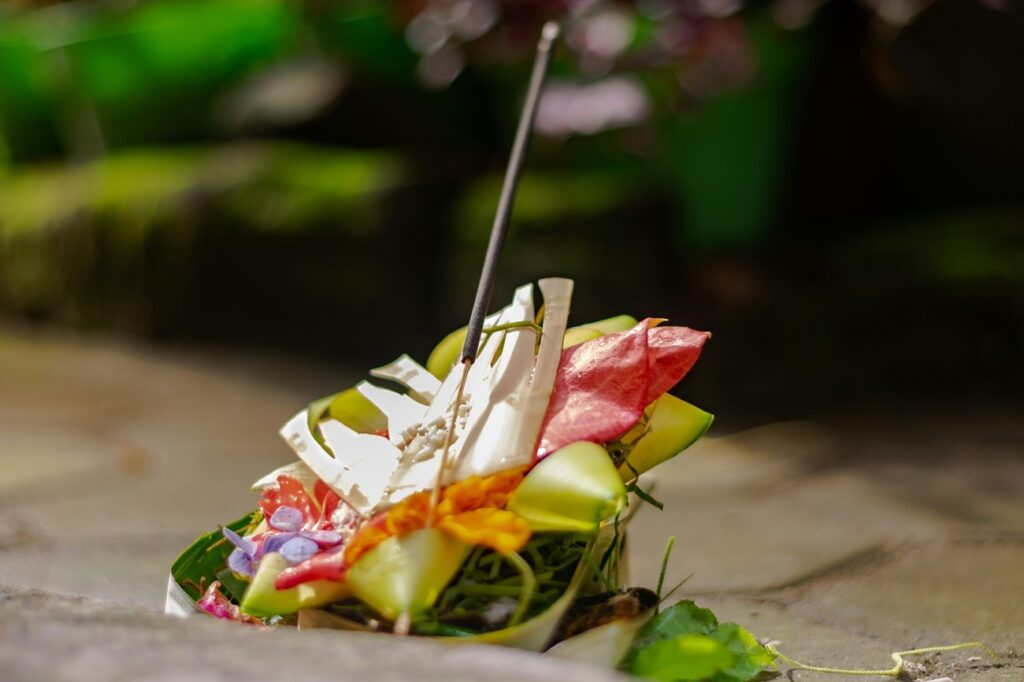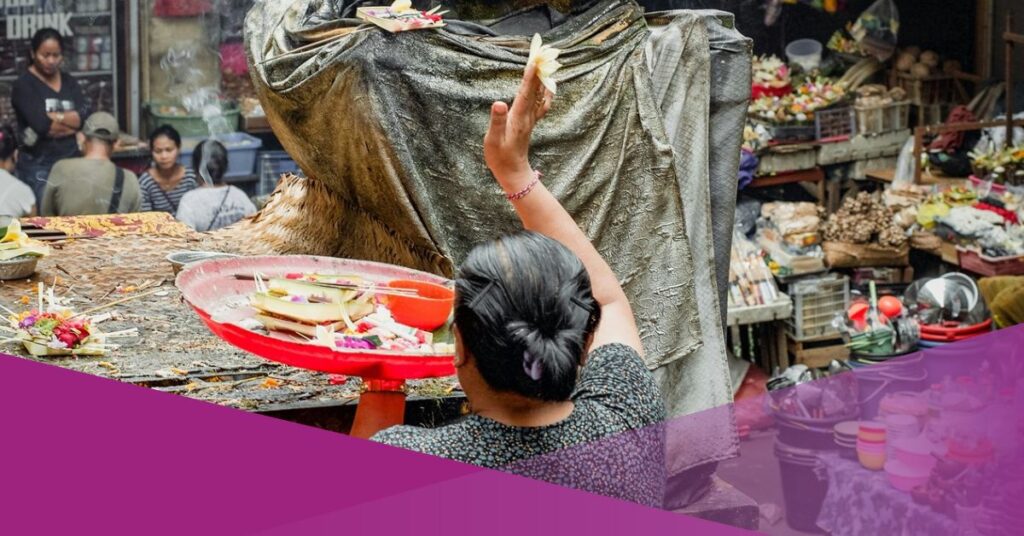When you are on vacation in Bali, one thing that stands out the most is the sight of Balinese offerings on the street in front of shops, people’s houses and shrines. These beautiful offerings is called canang.
Canang is an offering from Balinese people often used in Balinese daily offerings. It is a type of daily ritual and generally placed in a certain area. Its making is not arbitrary.
Balinese people usually offer canang in the morning, afternoon or evening, sometimes in religious ceremonies. Depending on the busyness and activities. What is certain is that in a day, every family must perform this ritual.
A video shows a foreign tourist learning to make canang. The comments on the video were positive, and they appreciated his wanting to get to know this tradition.
@max.jablonskii making the canang sari with locals was such a beautiful experience #bali #canangsari #seminyak #theseminyak #indonesia #canggu ♬ original sound – ryan.
Interested in what canang is and how to make it? Here are the facts about it and the meaning behind the offering.
What is Balinese Offerings or Canang?
Hinduism has several religious ceremonial processions, including canang sari, a form of Balinese offering. The term “sari” refers to the flower, essence, and extract.
In Hinduism, the means of worship can be flowers, holy water, fruit, leaves, and fire.
In Balinese culture, the concept of this offering is practiced in the form of art. One of them is various forms of offerings, namely Canang Sari.
Canang itself is the simplest form of offering commonly used as a form of thanksgiving to Sang Hyang Widhi Wasa (Brahma, Vishnu, and Shiva) for peace in the world.
The etymologically comes from the words “Ca,” which means beautiful, and “Nang,” which means goal. So canning means a beautiful goal or purpose.
Canang is a ritual tool for Balinese Hindus to worship Hindu God, Ida Sang Hyang Widhi. It is offered every day starting at 06.00 am and ending late in the evening.
The offerings are placed at certain points. These places are sacred to the Balinese Hinduism community and contain their beliefs. Not limited to the temple or Sanggah, canang can be placed inside the house, on the side of the road, or in the yard.
The core of this offering is made from natural materials, utilizing Janur (banana leaves or palm leaves) and flowers of various colors, which are not carelessly arranged on the small basket.
The small baskets made from janur for offerings in Bali.

Type of Offering in Bali
- Segehan is rice placed in a container with shallots, ginger, and salt as side dishes. There are various types of segehan such as white segehan (white rice), yellow white segehan (white and yellow rice), and manca color segehan (rice with five colors).
- Banten Saiban is a type of offering in Balinese in the form of rice placed in a small container of banana leaves, added with salt and shallots. Bali’s people make offerings when they finish cooking in the morning.
When do you use canang?
The most commonly used offerings in island of Bali is the canang sari, the simplest form of offering. But Balinese people also give offerings in special days.
Some of these special days include Galungan, Kuningan, Pagerwesi, and others. Usually, canang is placed at the top of the other offerings. That is the meaning of canang as the core of the offering.
Meanwhile, the canang is composed of several materials. The container part is made of coconut fiber and semat or bamboo sticks cut into small pieces resembling sticks.
Canang sari is a balinese offering made from janur, then filled with various types of colorful flowers, fragrant incense, and other requirements.
How to make Balinese offerings or canang sari?
As a foreigner, you can also immerse yourself in the beauty of Balinese culture by participating in canang sari-making classes.
Many resorts and hotels offer these special classes, providing you with a unique opportunity to learn and create your own canang sari.
First, you will be taught how to shape the container from Janur. Janur is yellowish-green coconut leaves in color. You can weave the Janur and formed it into a square by bringing the sides together until they meet.
Next, the contents of the canang sari are placed in the cardinal directions. Four kinds of flowers of different colors are prepared to make canang sari.
There are still rampe or rampi flowers in the form of sliced pandanus leaves placed in the middle of the flower arrangement.
Trying to understand balinese cultures, especially when you are on vacation, is an interesting and unforgettable experience. Make your vacation more culturally rich by taking a class to make a Balinese offerings during your visit to Bali.
Photo by Herwin Prabawananda on Unsplash


































